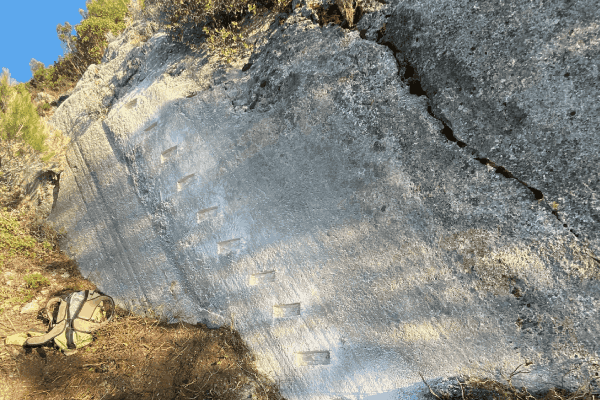Active fault slip-rates and earthquake recurrence controlled by stress transfer and viscous flow
Using cosmogenic dating techniques, we are investigating the different slip histories across a fault network near the Gulf of Corinth, Greece.

8 January 2024
Earthquakes on faults are clustered in time and can show multi millennia periods of high activity and low activity. This project is developing a physical model to explain how and why such multi millennial earthquake clustering occurs. Using cosmogenic dating techniques, we are creating a multi millennia slip history of faults from exposed fault planes and calculating slip-rates over tens of thousands to hundred of thousands of years from wave-cut platforms so to investigate the different slip histories across a fault network near the Gulf of Corinth, Greece. The findings could revolutionise our understanding of long term (multi millennia) behaviour of earthquake-generating faults.
Challenge being addressed
This project aims to decipher the causes and implications of earthquake clustering on multi millennial timescales. Why? Improving earthquake risk assessment requires a better understanding of the seismic (earthquake) hazard. A key improvement is using rates based on longer term timescales than historical records which are limited to up to a few hundred years and thus may not be representative of the loing-term hazard and in particular could miss out faults which have not hosted an earthquake within the time period of historical records. Fault-based seismic hazard assessment utilising geological knowledge of faults over much longer timescales is a key to achieving this. In addition, as earthquakes have been shown to cluster in time with irregular times between large events on individual faults, we need to understand the causes of clustering so as to be able to include it in our modelling of seismic hazard.
Aims and objectives
This project is measuring multi millennial rates of movement on individual faults north of the Gulf of Corinth, Greece using cosmogenic dating. This will allow us to obtain long-term slip-rates on faults and millennial-scale variations in these. The data will also reveal how the timings of clusters on different faults relate to each other and hence inform a model for determining when faults will likely be in phases of clusters and anticlusters.
Funding details: NERC Standard Grant, £650k
Project duration: Sep 2021 – Aug 2024
Principal Investigator: Prof Gerald Roberts (Birkbeck)
Co-Investigator: Joanna Faure Walker, Zoe Mildon (Plymouth)
Post docs: Jenni Robertson and Claudia Sgambato
More information on the NERC website.
 Close
Close

